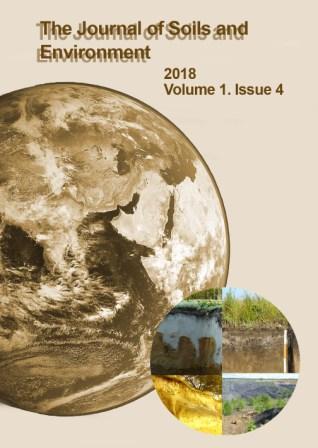Factors limiting the participation of the common European earthworm species (Oligochaeta, Lumbricidae) in soil-forming processes
DOI:
https://doi.org/10.31251/pos.v1i4.39Keywords:
taiga zone, earthworms, soil acidity, plant litter, forest floor, humus, zoopedoturbationAbstract
The aim of the study: In order to study the factors limiting soil-forming activity of various earthworm species most common for the European part of the taiga zone of Russia.
Location and time of the study. The study was conducted, in the period 2017-2018 in the European part of Russia.
Methodology. Model experiments in standardized laboratory conditions were carried out in plastic trays to examine the influence of mineral subsoil acidity and plant litter composition on the survival and preferences of representatives of different ecological groups of earthworms (Oligochaeta, Lumbricidae): Dendrobaena octaedra, Lumbriscus rubellus, Aporrectodea caliginosa (epigeic, epigeic-endogeic and endogenic, respectively), differently involved in mixing of soil mineral and organic layers.
Main results. For D. octaedra, which is not involved in the mixing of soil layers, the limiting factors (among the studied combinationst of mineral subsoil and litter properties) were not revealed. For L. rubellus, the most pedoturbation-effective of the studied species, the effect of litter chemistry on their integument was found to be the limiting factor in spruce forests. The A. caliginosa and D. octaedra were not sensitive to the chemical stimuli of the spruce litter F-layer. The substrates, which were apparently toxic for L. rubellus, were found to be suitable for D. octaedra, but not for A. caliginosa nutrition. L. rubellus was shown to useas food decomposition products of spruce, fir, juniper, cowberry, moss (Sphagnum) litter, enriched with carbonate-containing coprolites. The decomposition products of spruce litter, also enriched in coprolites, or in deciduous tree litter, were suitable for consumption by L. rubellus and A. caliginosa. The decomposition products of pine and cedar litter, including those enriched in coprolites, were not attractive as a food source for L. rubellus.
Conclusion. It was concluded that active relocation of mineral particles to the fresh litter surface is an evolutionarily developed type of L. rubellus behavior, leading to decreased litter acidity and increased decomposition rate, and that L. rubellus participates in the formation of coarse-humus soils. However, the decomposition of coniferous litter accelerates acidification of mineral soil layers, precluding even limited vermopedoturbation from soil-forming processes. Among the studied earthworm species D. octaedra (the least effective n pedoturbation) is the most fit to the habitat formed by climax taiga vegetation, whereas the most effective L. rubellus is the least fit.







